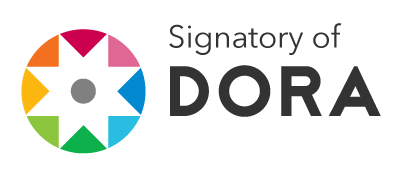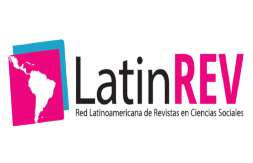Desafiando estándares estéticos en la alimentación Análisis de estrategias en el mercado de frutas y hortalizas subóptimas
DOI:
https://doi.org/10.52906/ind..v1i7.66Palabras clave:
Alimentos, Subóptimos, Desperdicio alimentario, Consumidor, Frutas imperfectasResumen
El objetivo de este artículo es conocer los estudios previamente realizados en la línea del consumidor alrededor de los alimentos subóptimos a través de una revisión de literatura con el fin de identificar las estrategias que sugieren los autores para incentivar su consumo y disminuir el desperdicio alimentario.
Para llevar a cabo la revisión, se siguió la metodología PRISMA donde se identificaron un total de 339 artículos, considerando las palabras clave: “suboptimal food” y “food waste”. Se utilizó como referencia la base de datos ScienceDirect, reconocida como la principal fuente mundial de investigación científica, técnica y médica. De los artículos identificados, únicamente 34 señalan en la revisión literaria estrategias que pueden emplearse para influir en la percepción del consumidor ante los alimentos subóptimos para disminuir el desperdicio alimentario. Los artículos se agruparon en tres líneas temáticas que representan los ámbitos en los que los hallazgos resultan aplicables: 1) en puntos de venta / minoristas, 2) en hogares y 3) hábitos de consumo personales.
A lo largo de este documento se resumen los resultados que se han obtenido en el estudio de los alimentos subóptimos y la percepción por parte del mercado de consumo, siendo un referente para la toma de decisiones en la implementación de nuevas estrategias comerciales y educativas sobre el consumo responsable y sostenible.
Descargas
Citas
guilar, G. (2018). Responsabilidad Social Corporativa en las Pérdidas y Desperdicios de Alimentos en México. Cuadernos PROLAM/ USP, 17(33), 168–197. https://www.revistas.usp.br/prolam/article/view/133625/156880 DOI: https://doi.org/10.11606/issn.1676-6288.prolam.2018.133625
Aguilar, G. (2019). Seguridad alimentaria y derecho a la alimentación en México. Seguridad alimentaria y pérdidas de alimentos en México (1st ed., p. undefined). Instituto Politécnico Nacional: Consejo Nacional de Ciencia y Tecnología: Miguel Ángel Porrúa.
Arboleda, M. (2021). Breve introducción a los conceptos de oferta, demanda y mercado. ICESI Economics Lecture Notes. (No. 15). Universidad Icesi.
Aschemann-Witzel, J. (2018). Consumer perception and preference for suboptimal food under the emerging practice of expiration date based pricing in supermarkets. Food Quality and Preference. https://doi.org/10.1016/j.foodqual.2017.08.007 DOI: https://doi.org/10.1016/j.foodqual.2017.08.007
Aschemann-Witzel, J., De Hooge, I. y Almli, V. (2021). My style, my food, my waste! Consumer food waste-related lifestyle segments. Journal of Retailing and Consumer Services. https://doi.org/10.1016/j.jretconser.2020.102353 DOI: https://doi.org/10.1016/j.jretconser.2020.102353
Aschemann-Witzel, J., Giménez, A. y Ares, G. (2018). Consumer in-store choice of suboptimal food to avoid food waste: The role of food category, communication and perception of quality dimensions. Food Quality and Preference. https://doi.org/10.1016/j.foodqual.2018.01.020 DOI: https://doi.org/10.1016/j.foodqual.2018.01.020
Aschemann-Witzel, J., Giménez, A. y Ares, G. (2018). Convenience or price orientation? Consumer characteristics influencing food waste behaviour in the context of an emerging country and the impact on future sustainability of the global food sector. Global Environmental Change. https://doi.org/10.1016/j.gloenvcha.2018.02.002 DOI: https://doi.org/10.1016/j.gloenvcha.2018.02.002
Aschemann-Witzel, Jensen, J., Jensen, M. y Kulikovskaja, V. (2017). Consumer behaviour towards price-reduced suboptimal foods in the supermarket and the relation to food waste in households. Appetite. https://doi.org/10.1016/j.appet.2017.05.013 DOI: https://doi.org/10.1016/j.appet.2017.05.013
Aschemann-Witzel, J., Otterbring, T., De Hooge, I., Normann, A., Rohm, H., Almli, V., y Oostindjer, M. (2019). The who, where and why of choosing suboptimal foods: Consequences for tackling food waste in store. Journal of Cleaner Production, 236. https://doi.org/10.3390/foods11213420 DOI: https://doi.org/10.1016/j.jclepro.2019.07.071
Bernal, C. (2010). Metodología de la investigación. Estado de México. Pearson Educación.
Bhattacharya, A. y Fayezi, S. (2021). Ameliorating food loss and waste in the supply chain through multi-stakeholder collaboration. Industrial Marketing Management. https://doi.org/10.1016/j.indmarman.2021.01.009 DOI: https://doi.org/10.1016/j.indmarman.2021.01.009
BMJ (2021). “PRISMA 2020 explanation and elaboration: updated guidance and exemplars for reporting systematic reviews”, BMJ 2021, Vol. 372, n160. DOI: https://doi.org/10.1136/bmj.n160
Bolos, L., Lagerkvist, C., Edenbrant, A. y Nayga, R. (2022). Consumer preferences for visually sub-optimal food: Role of information framing and personal goals. Resources, Conservation and Recycling. https://doi.org/10.1016/j.resconrec.2022.106426 DOI: https://doi.org/10.1016/j.resconrec.2022.106426
Bolos, L., Lagerkvist, C., Normann, A. y Wendin, K. (2021). In the eye of the beholder: Expected and actual liking for apples with visual imperfections. Food Quality and Preference. https://doi.org/10.1016/j.foodqual.2020.104065 DOI: https://doi.org/10.1016/j.foodqual.2020.104065
Cao, Y., y Miao, L. (2021). Consumer responses to suboptimal food products. Appetite. https://doi.org/10.1016/j.appet.2021.105205 DOI: https://doi.org/10.1016/j.appet.2021.105205
Castagna, A., Costa Pinto, D., Mattila, A. y De Barcellos, M. (2021). Beauty-is-good, ugly-is-risky: Food aesthetics bias and construal level. Journal of Business Research. https://doi.org/10.1016/j.jbusres.2021.06.063 DOI: https://doi.org/10.1016/j.jbusres.2021.06.063
Ceryes, C., Antonacci, C., Harvey, S., Spiker, M., Bickers, A. y Neff, R. (2021). “Maybe it’s still good?” A qualitative study of factors influencing food waste and application of the E.P.A. Food recovery hierarchy in U.S. supermarkets. Appetite. https://doi.org/10.1016/j.appet.2021.105111 DOI: https://doi.org/10.1016/j.appet.2021.105111
Cicatiello, C. y Franco, S. (2020). Disclosure and assessment of unrecorded food waste at retail stores. Journal of Retailing and Consumer Services. https://doi.org/10.1016/j.jretconser.2019.101932 DOI: https://doi.org/10.1016/j.jretconser.2019.101932
Cicatiello, C., Franco, S., Pancino, B., Blasi, E. y Falasconi, L. (2017). The dark side of retail food waste: Evidences from in-store data. Resources, Conservation and Recycling. https://doi.org/10.1016/j.resconrec.2017.06.010 DOI: https://doi.org/10.1016/j.resconrec.2017.06.010
Debucquet, G., Lombart, C. y Labbé-Pinlon, B. (2021). Depicting eaters and non-eaters of abnormal fruits and vegetables: Reflections of self-identity and food culture. Journal of Retailing and Consumer Services. https://doi.org/10.1016/j.jretconser.2021.102673 DOI: https://doi.org/10.1016/j.jretconser.2021.102673
De Hooge, I., Oostindjer, M., Aschemann-Witzel, J., Normann, A., Loose, S. y Almli, V. (2017). This apple is too ugly for me!: Consumer preferences for suboptimal food products in the super- market and at home. Food Quality and Preference, 56, 80–92. https://doi.org/10.1016/j.foodqual.2016.09.012 DOI: https://doi.org/10.1016/j.foodqual.2016.09.012
De Visser-Amundson, A., Peloza, J., Kleijnen, M. y Aydinli, A. (2023). Hiding in plain sight: How imperfect ingredient transformation impact consumer preference for rescue-based food. Food Quality and Preference. https://doi.org/10.1016/j.foodqual.2022.104771 DOI: https://doi.org/10.1016/j.foodqual.2022.104771
Fink, A. (1998). Conducting Research Literature Reviews: From Paper to the Internet, SAGE, Thousand Oaks, CA, USA.
Flanagan, A. y Priyadarshini, A. (2021). A study of consumer behaviour towards food-waste in Ireland: Attitudes, quantities and global warming potentials. Journal of Environmental Management. https://doi.org/10.1016/j.jenvman.2021.112046 DOI: https://doi.org/10.1016/j.jenvman.2021.112046
Gimenez, A., Ares G., Chheang, S. y Jaeger, S. (2023). Reduction in household food waste through an information strategy: Findings from consumers in Australia. Food Quality and Preference. https://doi.org/10.1016/j.foodqual.2023.104982 DOI: https://doi.org/10.1016/j.foodqual.2023.104982
Gomez, P., Minton, E. y Spielmann, N. (2023). Essential shape: The role of essentialist beliefs in preferences for misshapen produce. Appetite. https://doi.org/10.1016/j.appet.2023.107119 DOI: https://doi.org/10.1016/j.appet.2023.107119
Helmert, J., Symmank, C., Pannasch, S. y Rohm, H. (2017). Have an eye on the buckled cucumber: An eye tracking study on visually suboptimal foods. Food Quality and Preference. https://doi.org/10.1016/j.foodqual.2017.03.009 DOI: https://doi.org/10.1016/j.foodqual.2017.03.009
Jaeger, S., Machín, L., Aschemann-Witzel, J., Antúnez, L., Harker, F. y Ares, G. (2018). Buy, eat or discard? A case study with apples to explore fruit quality perception and food waste. Food Quality and Preference. https://doi.org/10.1016/j.foodqual.2018.05.004 DOI: https://doi.org/10.1016/j.foodqual.2018.05.004
Lagerkvist, C., Edenbrant, A., Bolos, L. y Nayga, R. (2023). Consumer acceptance of aesthetically imperfect vegetables – The role of information framing and personal values: Evidence from the United States. Food Quality and Preference. https://doi.org/10.1016/j.foodqual.2022.104737 DOI: https://doi.org/10.1016/j.foodqual.2022.104737
Lombart, C., Millan, E., Normand, J., Verhulst, A., Labbé-Pinlon, B. y Moreau, G. (2019). Consumer perceptions and purchase behavior toward imperfect fruits and vegetables in an immersive virtual reality grocery store. Journal of Retailing and Consumer Services. https://doi.org/10.1016/j.jretconser.2019.01.010 DOI: https://doi.org/10.1016/j.jretconser.2019.01.010
Mendivil, L., y Camarena, D. (2021). Frutas y hortalizas subóptimas: Un diagnóstico de la oferta. Coordinadoras: Molina, C., Sánchez, S., Verdugo, M., and Leyva, L. Estrategias y competitividad en la era digital. (pp. 245–271) Editorial Fontamara.
Ministry of Economy and Finance. (s.f.). Normatividad. Recuperado en noviembre de 2023 de:https://www.mef.gob.pe/index.php?option=com_content&view=category&id=672&Itemid=100357&lang=es
Morales, R. (2023). México bate récord en importaciones agroalimentarias desde EU. El Economista. Recuperado en noviembre de 2023 de: https://www.eleconomista.com.mx/empresas/Mexico-bate-record-en-importaciones-agroalimentarias-desde-EU-20230626-0143.html
Muñoz, H. (2021) Avances legislativos sobre prevención y reducción de pérdidas y desperdicios de alimentos en América Latina y el Caribe. FAO Estudio Legislativo N.116. Roma, FAO. https://doi.org/10.4060/cb2889es DOI: https://doi.org/10.4060/cb2889es
Pfeiffer, B., Sundar, A. y Deval, H. (2021). Not too ugly to be tasty: Guiding consumer food inferences for the greater good. Food Quality and Preference. https://doi.org/10.1016/j.foodqual.2021.104218 DOI: https://doi.org/10.1016/j.foodqual.2021.104218
Poveda, R. (2019). La pérdida y desperdicio de alimentos retos y oportunidades. Inseguridad alimentaria y pérdidas de alimentos en México (1st ed., pp. 107–132). Instituto Politécnico Nacional: Consejo Nacional de Ciencia y Tecnología: Miguel Ángel Porrúa.
PRISMA (2020). PRISMA Flow Diagram. Recuperado en noviembre de 2023 de http://www.prisma-statement.org/PRISMAStatement/FlowDiagram
Qi, D., Penn, J., Li, R. y Roe, B. (2022). Winning ugly: Profit maximizing marketing strategies for ugly foods. Journal of Retailing and Consumer Services. https://doi.org/10.1016/j.jretconser.2021.102834 DOI: https://doi.org/10.1016/j.jretconser.2021.102834
Real Academia Española. (s.f.). Comercio. En Diccionario de la lengua española (23.a ed.). [versión 23.6 en línea]. Recuperado de https://dle.rae.es/comercio
Ribbers, D., Geuens, M., Pandelaere, M. y van Herpen, E. (2023). Development and validation of the motivation to avoid food waste scale. Global Environmental Change. https://doi.org/10.1016/j.gloenvcha.2022.102626 DOI: https://doi.org/10.2139/ssrn.4068191
Schmidt, K. y Matthies, E. (2018). Where to start fighting the food waste problem? Identifying most promising entry points for intervention programs to reduce household food waste and overconsumption of food. Resources, Conservation and Recycling. https://doi.org/10.1016/j.resconrec.2018.07.023 DOI: https://doi.org/10.1016/j.resconrec.2018.07.023
Secretaría de Agricultura y Desarrollo Rural. (2023). Alcanzan exportaciones agroalimentarias del país récord de 39 mil 272 mdd a septiembre: Agricultura. Recuperado en noviembre de 2023 de: https://www.gob.mx/agricultura/prensa/alcanzan-exportaciones-agroalimentarias-del-pais-record-de-39-mil-272-mdd-a-septiembre-agricultura?idiom=es
Smith, A. (2002). An Inquiry into the Nature and Causes of the Wealth of Nations. Readings in economic sociology, 6-17. Recuperado en noviembre de 2023 de: https://openlibrary-repo.ecampusontario.ca/jspui/bitstream/123456789/1181/5/An-Inquiry-Into-the-Nature-and-Causes-of-the-Wealth-of-Nations-1645639496.pdf DOI: https://doi.org/10.1002/9780470755679.ch1
Stöckli, S. y Dorn, M. (2021). Awareness, intention, and behavior: Three empirical perspectives on predicting the purchase of abnormally shaped fruits and vegetables. Resources, Conservation and Recycling. https://doi.org/10.1016/j.resconrec.2021.105431 DOI: https://doi.org/10.1016/j.resconrec.2021.105431
Symmank, C., Zahn, S. y Rohm, H. (2018). Visually suboptimal bananas: How ripeness affects consumer expectation and perception. Appetite. https://doi.org/10.1016/j.appet.2017.10.002 DOI: https://doi.org/10.1016/j.appet.2017.10.002
Tsalis, G. (2020). What’s the deal? Consumer price involvement and the intention to purchase suboptimal foods. A cross-national study. Food Quality and Preference. https://doi.org/10.1016/j.foodqual.2019.103747 DOI: https://doi.org/10.1016/j.foodqual.2019.103747
van Giesen, R. y De Hooge, I. (2019). Too ugly, but I love its shape: Reducing food waste of suboptimal products with authenticity (and sustainability) positioning. Food Quality and Preference. https://doi.org/10.1016/j.foodqual.2019.02.020 DOI: https://doi.org/10.1016/j.foodqual.2019.02.020
Wharton, C., Vizcaino, M., Berardy, A., Opejin, A. (2021). Waste watchers: A food waste reduction intervention among households in Arizona. Resources, Conservation and Recycling, 164. https://doi.org/10.1016/j.resconrec.2020.105109 DOI: https://doi.org/10.1016/j.resconrec.2020.105109
WRAP. (2013). Consumer attitudes to food waste and food packaging: project code: CFP104-000. Recuperado en agosto de 2023 de: https://wrap.org.uk/sites/default/files/2020-12/Consumer-attitudes-to-food-waste-and-packaging.pdf
Xu, Y., Jeong, E., Jang, S. y Shao, X. (2021). Would you bring home ugly produce? Motivators and demotivators for ugly food consumption. Journal of Retailing and Consumer Services. https://doi.org/10.1016/j.jretconser.2020.102376 DOI: https://doi.org/10.1016/j.jretconser.2020.102376
Yang, X., Huang, Y. y Chen, Q. (2023). Less delicious but more natural: The effect of the natural label in promoting ugly food consumption. International Journal of Hospitality Management. https://doi.org/10.1016/j.ijhm.2023.103601 DOI: https://doi.org/10.1016/j.ijhm.2023.103601
Publicado
Cómo citar
Número
Sección
Categorías
Licencia
Autoría Anónima
- Los envíos no deben aparecer en ninguna página web o cualquier otro sitio visible para evitar que afecte a la revisión por pares. Si su artículo aparece en alguna web, por favor, retírelo antes de subir su envío.
- Los envíos iniciales deben omitir cualquier tipo de información que permita la identificación del autor/es para garantizar la revisión ciega por pares.













